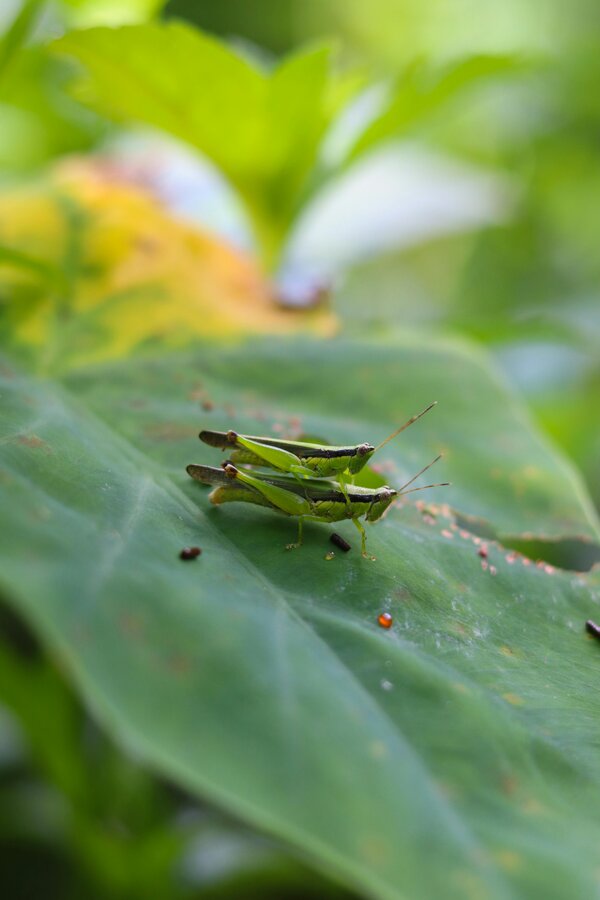Ugh. That unmistakable, slightly musty scent hits you as you open the door. Not again. You glance up, and there they are – a clustered
mass of black and red-orange bugs, sunning themselves on your siding like tiny, unwelcome tourists. Boxelder bugs. They’re not harmful,
not really. But let’s be honest, they’re creepy, they’re persistent, and finding them inside your cozy space? That’s where frustration boils
over. I get it. I’ve been there, swatting, vacuuming, wondering if my house is secretly theirs. Breathe. You can take back control. Here’s
your battle plan, grounded in science and sanity.
Quick Facts to Fuel Your Fight:
- 20,000+ Eggs?! A single female can lay over 20,000 eggs in her lifetime, often in tree bark crevices. (Source: Utah State University Extension – https://extension.usu.edu/pests/ipm/notes_ornamental-trees/boxelder-bug)
- Pheromone Party: They release aggregation pheromones, literally inviting their friends over. That’s why you see HUGE clusters. (Source: University of Minnesota Extension – https://extension.umn.edu/nuisance-insects/boxelder-bugs)
- Sun Seekers: They LOVE warm, sunny south/west-facing walls in fall and spring. Knowing their sunbathing spots helps target your defense.
- Accidental Invaders: They don’t eat your home, breed inside, or bite/sting humans or pets. They’re just looking for cozy winter digs… your cozy winter digs.
- Long Haulers: Adults can live up to 1 year, meaning overwintering adults emerge in spring before new generations hatch.

Phase 1: Fortify Your Fortress (Prevention is POWER)
Think of this as building your castle walls before the siege begins. First, become a detective. Grab a flashlight (even better on a sunny afternoon when they’re active) and meticulously inspect your home’s exterior, especially south and west walls. You’re hunting for:
- Cracks & Crevices: Tiny gaps around windows, doors, siding, utility lines, vents, and foundations are welcome mats. Seal these with high-quality silicone or silicone-latex caulk. Pay special attention to areas where different building materials meet.
- Damaged Screens: Check every window and vent screen. A hole the size of a pencil eraser is a boxelder bug highway. Repair or replace immediately.
- Loose Soffits/Fascia: Ensure these are tightly sealed where they meet the roofline.
- Door Sweeps & Weatherstripping: Install tight-fitting sweeps on exterior doors and ensure weatherstripping isn’t worn. Studies show proper sealing can reduce accidental insect entry by over 90%! (Source: Penn State Extension – Focus on Home Sealing: https://extension.psu.edu/ – search “exclusion pest control”)
Concurrently, manage their habitat:
- Tree Triage: If you have female boxelder trees (the ones producing the winged seeds they love) or maple/ash trees nearby, consider their placement. Pruning branches away from your house (at least 10-15 feet) removes easy bridges. Removing female boxelder trees is the most effective long-term solution but isn’t always practical. Raking and removing fallen seeds diligently in autumn removes a major food source near your foundation.
- Foundation Hygiene: Keep the perimeter clear of leaf litter, grass clippings, mulch piled high against siding, and debris. Maintain a clean, dry zone (about 6-12 inches) next to your foundation.
Phase 2: Engage the Enemy (Safe & Effective Removal Tactics)
So, they’re already staging their sit-in protest on your walls? Don’t panic, and resist the urge to grab the strongest chemical spray! Here’s how to fight back smartly:
1.The Soapy Suds Surprise: This is my GO-TO for clusters outdoors. Mix 2 tablespoons of liquid dish soap (Dawn works great) into 1 quart of warm water in a spray bottle. Drench those clusters! The soap breaks down their waxy outer coating, causing them to dehydrate and die within minutes. It’s non-toxic, cheap, and highly effective on contact. Expect a 70-90% knockdown on visible clusters. Pro Tip: Add 1 cup of white vinegar to the mix for extra punch and odor removal.
2. Vacuum Victory (Outside/Inside): For clusters on accessible walls or those that have breached indoors, your vacuum cleaner is your best friend. Use the hose attachment. Crucially: Immediately empty the vacuum bag/canister outside into a sealed plastic bag and dispose of it. Otherwise, they’ll just crawl back out! For indoor stragglers, this is the safest, cleanest method. Avoid crushing them indoors – they can stain and smell.
3.The Garden Hose Blitz: A strong jet of water from your hose can physically dislodge large clusters from siding. It’s temporary but provides immediate relief and disrupts their pheromone party. Follow up with soapy spray!
Phase 3: When All Else Fails (Understanding the Big Guns)
Honestly? Pesticides should be your LAST resort. They pose risks to beneficial insects, pets, kids, and the environment. Broad-spectrum sprays often fail because new bugs just move into the vacuum. However, if you have a massive, persistent infestation, targeted professional help might be justified.
Residual Sprays (Pro Use Recommended): Pest control professionals can apply targeted, longer-lasting residual insecticides to specific areas like the foundation, eaves, and potential entry points before the bugs try to move in (late summer/early fall is key timing). DIY spot sprays are rarely effective for long-term control and often create more risk than reward.
The Critical Caveat: NO pesticide application will work if you haven’t sealed entry points first! It’s like trying to bail out a boat without plugging the hole.
Beyond the Battle: Embracing the Ecosystem
Remember, boxelder bugs are part of the food web! Encouraging natural predators like birds, spiders, and praying mantises in your yard creates a more balanced ecosystem. Bird feeders and houses can help attract bug-eating allies. Think long-term habitat management, not just chemical warfare.
Your Peace of Mind is Possible
Getting rid of boxelder bugs isn’t about achieving total annihilation (that’s near impossible without removing their food source). It’s
about smart exclusion, timely intervention, and managing your frustration. By sealing your home diligently, using safe removal methods
like soapy water and the vacuum, and reducing their preferred habitat, you can drastically reduce their presence inside your sanctuary.
It takes vigilance, especially in the critical fall and spring seasons. But picture this: opening your door on a warm autumn day and
seeing… just your beautiful home. No unwelcome guests. That feeling of relief? That’s the goal. You’ve got this!
Now tell me – what’s your biggest boxelder bug battle story? Share your triumphs (or frustrations!) in the comments below! Let’s swap
tips and support each other in the quest for a bug-free zone!





